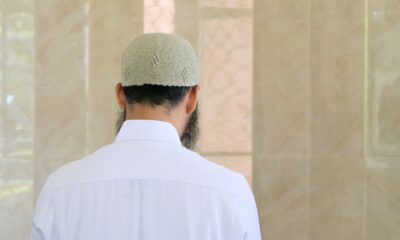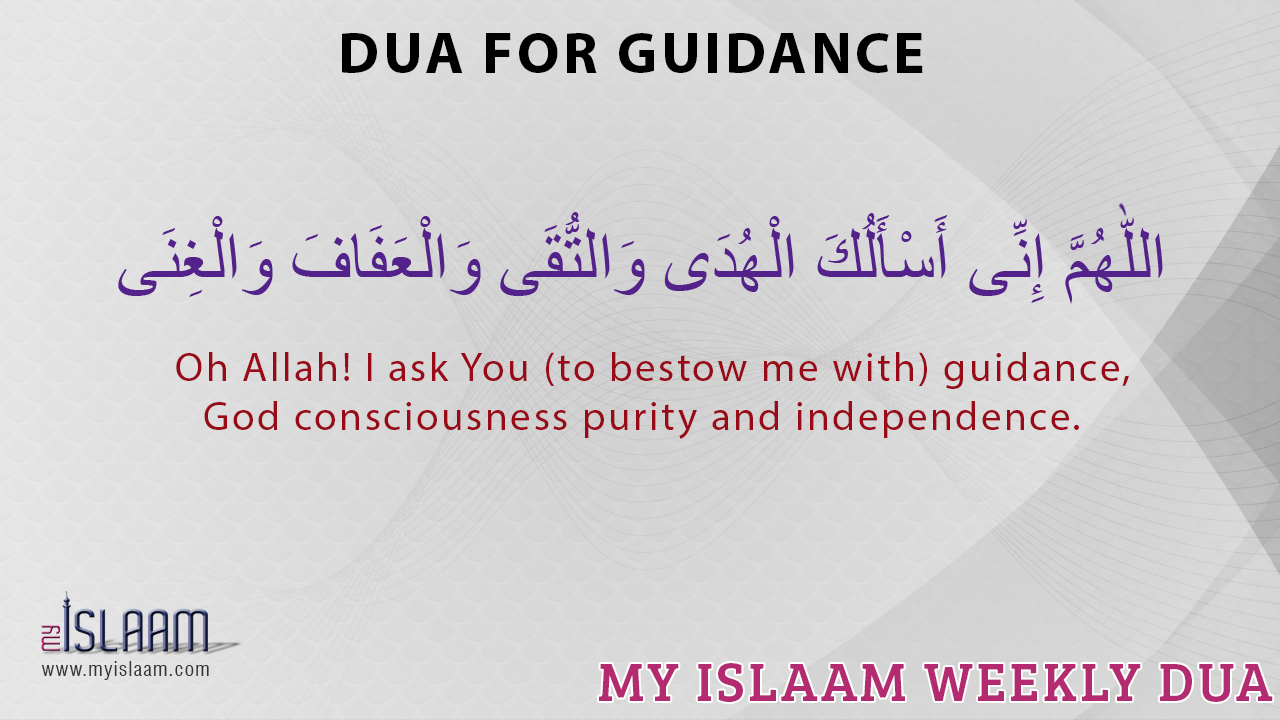The meaning of Hijab
Hijab literally means a barrier. In the Arabic language, ‘Haajib’ means a guard and a protector, who prevents people who are disliked, from entering the premises.
Hijab technically means the covering women have been ordered to abide by. This prevents lustful gazes and protects women in general.
The ruling of Hijab
One thing to understand at this point is that there are two issues:
1. The minimum amount of body that must be covered (satr al awrah)
2. Hijab
Both of the above have different rulings.
The rulings regarding the first were established early on within Islam.
The main verse regarding the hijab is in surah ahzaab, v 53:
When you ask them (the wives of the Prophet peace be upon him) for anything, then ask them from behind a curtain (without seeing them) 33/53.
This verse was revealed when the Prophet peace be upon him married Zainab Bint Jahsh RA. Most of the scholars are of the view that this happened in 5AH. So the verse regarding hijab was revealed in 5AH.
With regards to hijab, from unknown men, there is also a second verse:
O Prophet, tell your wives, your daughters, and the women of the believers, that they (when they have to leave their homes) should draw down their ‘jalabeeb’ over themselves. This is best for their recognition, and so they are not harmed. (33/59)
The word jilbab, according to Ibn Hazm, means clothing which covers the entire body and not some of it.
The face
The main discussion here is that, does the face have to be covered as a part of the hijab?
To answer this, we need to understand that women are allowed to expose certain beauty.
They must not expose their beauty, except what becomes apparent of it. 22/31
Scholars have differed with regards to ‘what becomes apparent of it (by itself)’.
The summary of which is that there are two opinions:
1. A woman can show her hands and her face.
2. A woman cannot show her hands and her face, the part of the verse is regarding the outer clothing, which can be seen by others.
The Hanafi opinion is that, the face and hands do not have to covered, except when there is shahwa and desire. The scholars have even stated that if there is the fear of desire, or a possibility of it, then a person should not look unless needed. It is also best for a man that he lowers his gaze from adult women, and young girls as well.
Evidences for the covering the face
1. When you ask them (the wives of the Prophet peace be upon him) for anything, then ask them from behind a curtain (without seeing them) 33/53.
2. O Prophet, tell your wives, your daughters, and the women of the believers, that they (when they have to leave their homes) should draw down their ‘jalabeeb’ over themselves. This is best for their recognition, and so they are not harmed. (33/59)
3. The command of lowering the gaze for men- ‘tell the believing men that they should lower their gazes, 24/31. There would be no need to give this command, if it was permissible to look at the face.
4. When Jarir RA, looked at a woman, the Prophet peace be upon him ordered him to look away (Muslim)
5. The Prophet said the whole body of a woman is awrah (Tirmizi)
The evidences for the Hanafi view:
1. A woman does not have to cover her face and hands in prayer. This means these two body parts are not included in ‘hijab’. If it was necessary to cover them, they would also need to be covered in salaah.
2. The quran gives permission to women to display their beauty in front of their husbands- ‘they may expose their beauty to only their husbands…’24/31. ‘The beauty’ referred to here in this verse cannot be the outer clothing, as this is already visible to the husband anyway.
3. Women also need to go out of the house for their work, social interaction etc., and this usually cannot be really be done without exposing the face.
4. Once Umar RA stood up and spoke against the high dowry given to women. A woman stood up and recited the verse: when you have given one of them a fortune, then do not take anything from it 4/30, explaining there cannot be a maximum limit on the dowry. In this, the narrator describes the face of the woman, which would mean that her face was not covered.
5. Once when Bilal RA or Anas RA, saw the hands of Fatima RA, and described them as ‘as if they were like the moon’. This would mean the hands do not have to covered as a part of the hijab (Almabsoot).
6. Once Asmaa RA came to the Prophet peace be upon him wearing thin clothing. The Prophet peace be upon him turned away and said when a girl reaches puberty, then it is only permissible to view this and this, and pointed towards the face and hands (Bayhaqi).
7. During hajjatul wadaa’, the Prophet’s cousin, Fadl Ibn Abbass RA was on the camel with the Prophet peace be upon him. Fadl RA saw a beautiful woman, so the Prophet peace be upon him turned his Fadl’s face away (Abu Dawud).
8. During the conquering of Makkah, the Prophet’s cousin sister, Umm Hani RA was in front of the Prophet (and her face was visible) (Bukhari).
There are many other evidences along with these. The Hanafis interpret the evidences given by the other group to be regarding ihtiyaat (caution) and the preferred way (istihbaab).
The situation today
The view of the Hanafis is quite strong, but this is all when there is no fear of fitna, and a person feels he can control himself/ the woman feels safe.
Another thing to consider is with time and place certain rulings change. This can be seen from the words of Aisha RA, when she said (despite the Prophet having given women permission to pray in the masjid), if the Prophet peace be upon him could see what women have done, then he would have stopped them (from praying in the masjid) (Durr Mukhtaar Ala Radd).
To assume that most men do not look at other women, without lustful glances would be nothing but wishful thinking and an error. As a preventative measure (sadd al zaraai’), the latter Hanafis have adopted the opinion of the malikis and hanbalis, and said a woman should cover her face.
If a person fears desire, or has doubts, then he should not look at her face. The permissibility is when a person feels there is no desire; otherwise it will be haram (Durr Mukhtaar Ala Radd).
The levels of hijab
1. Hijab in front of unknown men; a woman should cover her face and hands as well, and only expose when needed.
2. Non-mahram relatives; because we meet with relatives often, thus there is difficulty in covering the face whenever they are around. So, if there is no fear of lustful gazes, a woman can expose her face and her hands. The evidences of this are many, such as the Prophet peace be upon him looking at Asmaa RA, or looking at Umm Hani during the conquest of Makkah etc.
3. mahram relatives- these relatives are normally around and once again, it would be difficult to cover the face every time they are around. These close relative will not have the lustful gazes that others might have, and thus there can more flexibility with regards to the hijab. If her face, hands, arms, upper chest, and feet up to the ankles are exposed, there is room for that; even though it would be better to expose as less as possible, out of hayaa.
They may only expose their beauty to their husbands, their fathers, their fathers-in-law, their sons, the sons of their husbands, their brothers, the sons of the sisters, their women… 24/31.
The ‘beauty’ here refers to the parts of the body where jewellery is normally worn.
4. Hijab with the husband: a woman does not have to cover any of her body in front of her husbands. It is disliked that she exposes her private area to him unless the occasion occurs.
Note:
There are two groups which will be treated like mahrams.
1. Those men who have no desire for women at all; impotent, insane men etc from whom women feel safe.
2. Young children who are yet to develop attraction towards the opposite gender.
The hadith describing the brother –in-law as ‘death’ is regarding the prohibition of being in seclusion with the woman. The same ruling applies for the other non-mahram relatives within the house. A woman may keep her face uncovered in front of these relatives, but must not be alone with them (in khalwa).

 Songs make hypocrisy grow in the heart just as water makes crops grow
Songs make hypocrisy grow in the heart just as water makes crops grow 
















